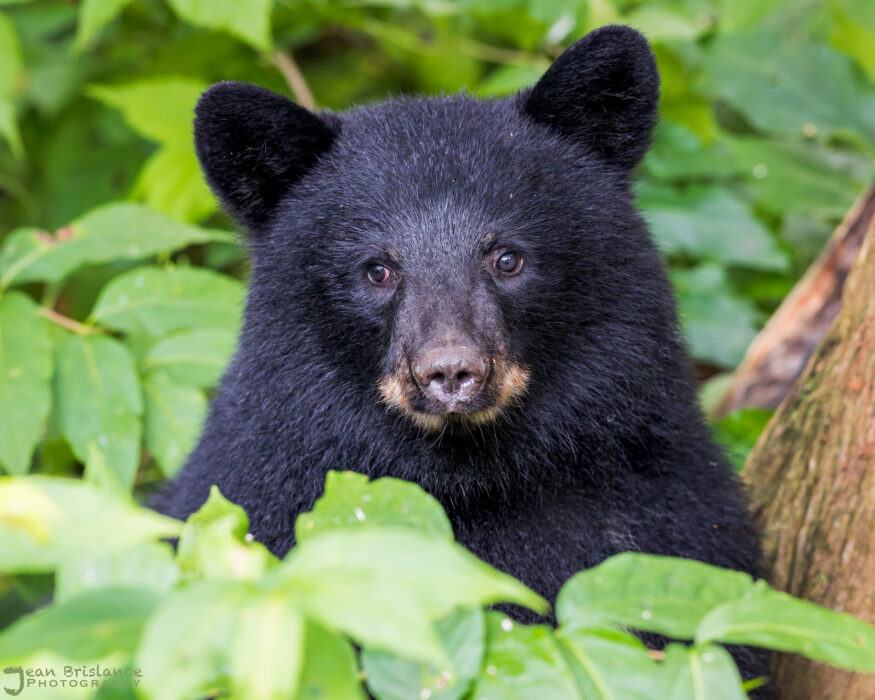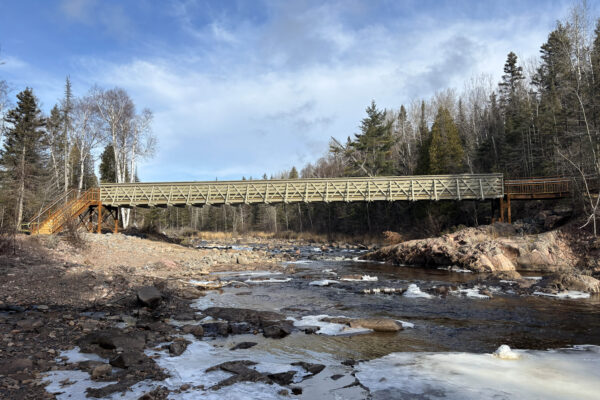DNR says 2025 was a “great year to be a bear” in Minnesota
While it may still be unseasonably warm across the state, Minnesota’s bears are already busy preparing for winter.
Minnesota Department of Natural Resources Bear Project Lead Andy Tri told WTIP that pregnant black bears and those with cubs are just weeks away from denning, and that male black bears will follow soon after.
The state’s bears are focused on packing on as much fat as possible before heading into their dens, and they are starting the process in good condition after a strong year for berries and other bear foods. Tri said that while the state’s wild blueberry crop was disappointing in the north and a failure in the south, the abundance of other berries made up for it.
Though there are a lot of wild foods still on the landscape at this point, as bears enter hyperphagia, a state that drives them to continuously search for food and eat as much as possible, people living in bear country are likely to see more bear activity close to human spaces.
One contributing factor to the number of bears people might be spotting in Minnesota’s northernmost areas, is Canadian bears. Tri explained that the typical bear foods in southern Canada had a particularly bad year, and it is not uncommon for bears to migrate in search of food, especially as they prepare for winter.
Tri said that bears who experienced a leaner summer are hungrier at this point in the year, and might behave differently from those who enjoyed easy food access. He said they are more likely to take chances, and might be harder for people to scare off. He said, “They’re a bit more bold, and they’re going to have more human bear encounters than an average bear would be just because they’re hungry.”
During the fall, bears will consume 12,000-25,000 calories per day in order to build up their fat stores. And though they are hungry, Tri said it is important for humans not to feed bears. In cases like a young, orphaned cub, he encourages people to contact the DNR, but otherwise he said that there is no need for humans to leave food out intentionally for bears, and that doing so can compromise that bear in the future.
“What that happens over time is that it can make the bears less wary of town and less wary of people, and often it just ends up badly for the bear. You know, there are bears that get killed every year in human bear conflicts just because they are in the wrong place at the wrong time,” Tri said. “They’re more bold and perceived as a safety risk.”
Tri said that during this time of increased bear activity, it is especially important for people to secure any attractants in the area of their homes. This includes trash cans, compost bins, grills, and bird feeders. For attractants like fruit trees, which can’t be moved indoors, Tri recommended using an electric fence, and staying vigilant about gathering any fruit that has fallen off the tree, or which is ready for harvest.
While bear sightings might be more common during this season, Tri reminded WTIP that northern Minnesota has always been bear country, and that bears are not inherently dangerous. He said that by taking precautions like securing attractants, keeping dogs leashed in areas where bears are active, and reviewing Bear Wise tips for hiking and camping will help keep both people and bears safe. “It’s very easy to coexist with them,” Tri said. “These are not hard things to do.”
For more information about best practices in bear country, Tri directed people to bearwise.org.
WTIP’s Kirsten Wisniewski spoke with DNR Bear Project Lead Andy Tri. Audio of that interview is below.














